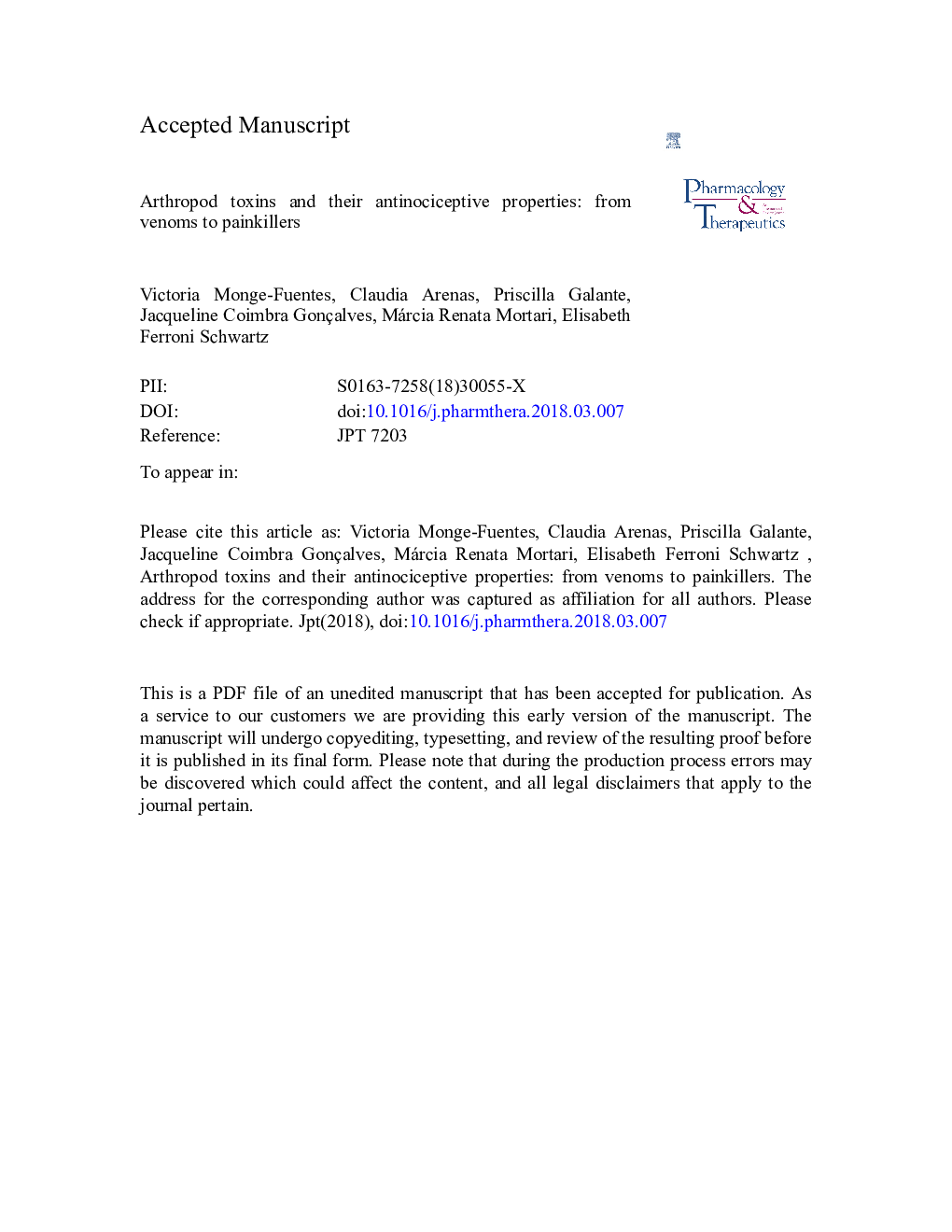| Article ID | Journal | Published Year | Pages | File Type |
|---|---|---|---|---|
| 8536796 | Pharmacology & Therapeutics | 2018 | 52 Pages |
Abstract
The complex process of pain control commonly involves the use of systemic analgesics; however, in many cases, a more potent and effective polypharmacological approach is needed to promote clinically significant improvement. Additionally, considering side effects caused by current painkillers, drug discovery is once more turning to nature as a source of more efficient therapeutic alternatives. In this context, arthropod venoms contain a vast array of bioactive substances that have evolved to selectively bind to specific pharmacological targets involved in the pain signaling pathway, playing an important role as pain activators or modulators, the latter serving as promising analgesic agents. The current review explores how the pain pathway works and surveys neuroactive compounds obtained from arthropods' toxins, which function as pain modulators through their interaction with specific ion channels and membrane receptors, emerging as promising candidates for drug design and development.
Keywords
N-methyl-d-aspartateAGAPPsalmotoxin 1pT1PcTx1P2X3ASICsi.c.v.TRPV1NMDADRGAMPATrpdorsal root ganglionAdenosine TriphosphateATPBmkCNScentral nervous systemtransient receptor potentialTransient receptor potential vanilloid 1sodium channelsVoltage-dependent calcium channelsacid-sensing ion channelsKainateglutamatePurinergic receptors
Related Topics
Health Sciences
Pharmacology, Toxicology and Pharmaceutical Science
Pharmacology
Authors
Victoria Monge-Fuentes, Claudia Arenas, Priscilla Galante, Jacqueline Coimbra Gonçalves, Márcia Renata Mortari, Elisabeth Ferroni Schwartz,
